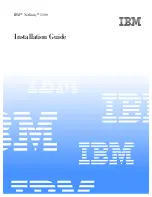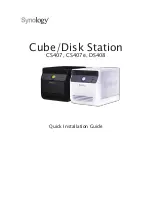
7
e-business Java workloads on the same server as your
database, helping to simplify and reduce the infrastructure
required for Web applications while helping to lower your
overall total cost of ownership.
zAAPs are designed to operate asynchronously with the
general purpose CPs to execute Java programming under
control of the IBM Java Virtual Machine (JVM). This can
help reduce the demands and capacity requirements on
general purpose CPs which may then be available for real-
location to other zSeries workloads. The amount of general
purpose CP savings may vary based on the amount of
Java application code executed by zAAP(s). And best
of all, IBM JVM processing cycles can be executed on
the confi gured zAAPs with no anticipated modifi cations
to the Java application(s). Execution of the JVM process-
ing cycles on a zAAP is a function of the IBM Software
Developer’s Kit (SDK) for z/OS Java 2 Technology Edition,
z/OS 1.6 (or z/OS.e 1.6) and the innovative Processor
Resource/Systems Manager
™
(PR/SM
™
).
Notably, execution of the Java applications on zAAPs,
within the same z/OS SMP LPAR as their associated
database subsystems, can also help simplify the server
infrastructures and improve operational effi ciencies. For
example, use of zAAPs to strategically integrate Java
Web applications with backend databases could reduce
the number of TCP/IP programming stacks, fi rewalls, and
physical interconnections (and their associated process-
ing) that might otherwise be required when the application
servers and their database servers are deployed on sepa-
rate physical server platforms.
Essentially, zAAPs allow customers to purchase additional
processing power exclusively for z/OS Java application
execution without affecting the total MSU rating or machine
model designation. Conceptually, zAAPs are very similar to
a System Assist Processor (SAP); they cannot execute an
Initial Program Load and only assist the general purpose
CPs for the execution of Java programming. Moreover,
IBM does not impose software charges on zAAP capacity.
Additional IBM software charges will apply when additional
general purpose CP capacity is used.
Customers are encouraged to contact their specifi c ISVs/
USVs directly to determine if their charges will be affected.
z890 has a single model, the A04, and will support a wide
performance range from sub uni models through to a 4-
way multiprocessor. There will be a total of 28 capacity
settings which will offer outstanding granularity for custom-
ers' workload and cost management. The A04 model will
provide up to four processor units (PUs) that can be char-
acterized as either Central Processors (CPs), Integrated
Facility for Linux (IFLs), Internal Coupling Facilities (ICFs)
or zAAPs. This model will be offered as a new build and as
upgrades from designated models of the z800.
With the introduction of the z890 customers can expect to
see the following performance improvements with z/OS 1.4:
Number of CPs Base Estimated Ratio
1 z800 2.0
2 z800 2.1
3 z800 2.1
4 z800 2.1
The Large System Performance Reference (LSPR) should
be referenced when considering performance on the z890.
Visit:
ibm.com
/servers/eserver/zseries/lspr/ for more infor-
mation on LSPR.








































